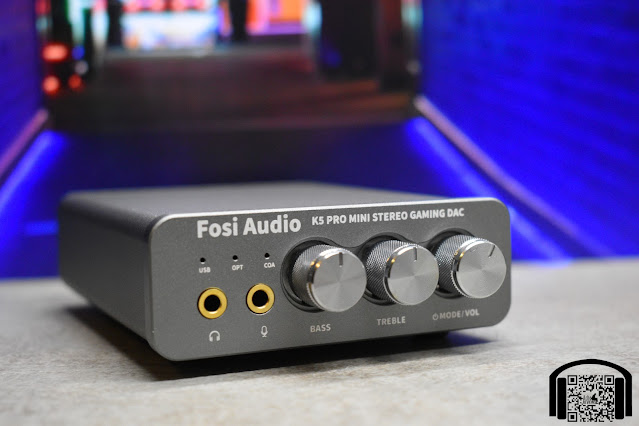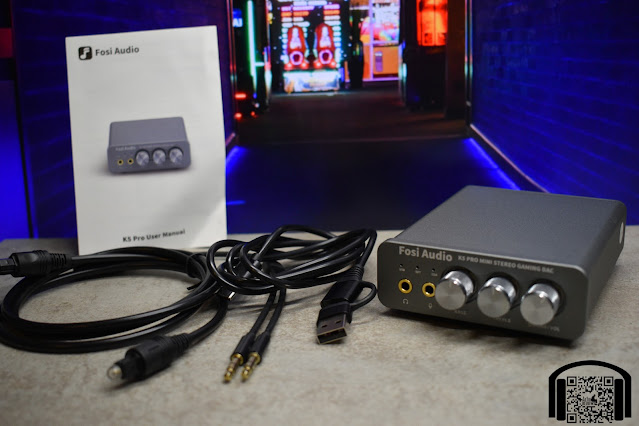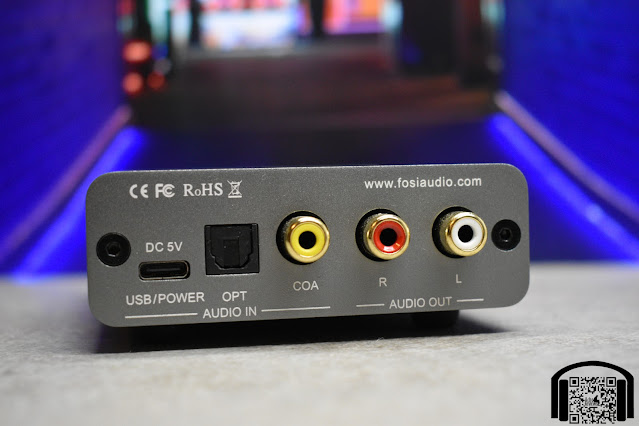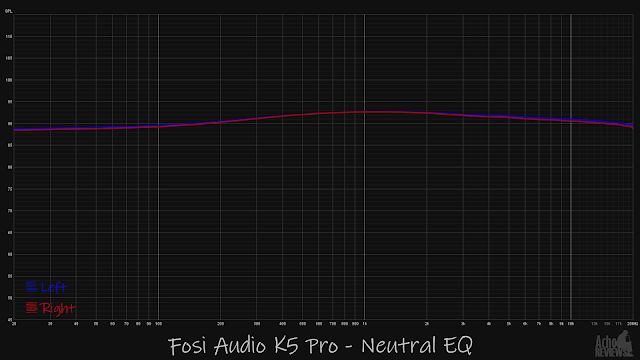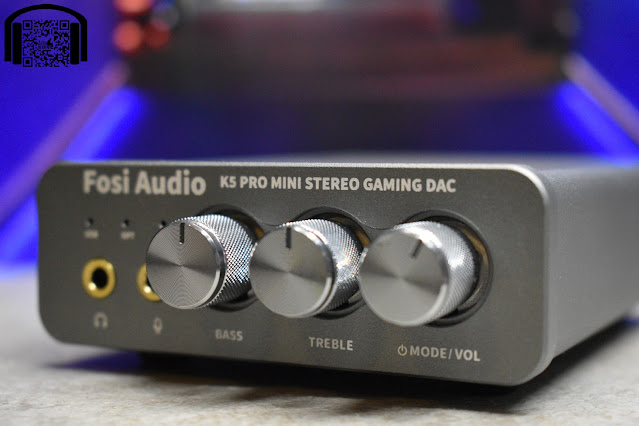I’m not sure how much traction this thread will get but it is always interesting to try out some of the less known budget items out there…
Fosi Audio K5 Pro
TLDR version on YouTube: TDLR - Fosi Audio K5 Pro
The K5 Pro has been sent to me directly by Fosi Audio. I have no affiliation with Fosi Audio and I will do my best, as always, to be as unbiased and sincere as humanly possible, however, it is always good to note that this device has not cost me anything to try out.
You can find the Fosi Audio K5 Pro on Amazon in almost any country, so there is really no need to head over to my blog to see any links, which are always non-affiliate anyway.
Unless, of course, you want to practice your español and read the Spanish version (link to blog at the end of this post).
To avoid being repetetive in my reviews, you can find all the info about how I create the reviews, equipment used, how I receive the products and how to interpret my reviews by visiting: About my reviews
Intro…
Fosi Audio is a brand that pops up regularly on Amazon (and AliExpress) when searching for budget audio gear. Personally I have never tried a Fosi Audio product, although I have come close to ordering one on a few occasions but something else always popped up and it got pushed back.
They have quite a few different models, covering things like 2.1 amplifiers, subwoofer amplifiers, tube hybrid amplifiers etc. And amongst those is the K5 Pro, a device labelled as a “Mini Stereo Gaming DAC”, which comes in at around 90€ (on Amazon Spain) and features a headphone output, amongst other things.
Therefore, when Fosi reached out recently and asked if I would be interested in trying out and possibly reviewing any of their products, I said that I would be interested in giving the K5 Pro a whirl and seeing what they could offer in this budget priced category.
Before getting into the review, I have to say that I was surprised at the details that Fosi share about the product. Usually we find the most basic of specs published and not much else, yet Fosi actually list the chips used and the THD, SNR, etc. I’m afraid that I don’t have the equipment to check that what they publish is correct but they do seem to be at least realistic, on paper, for a device of this size and price.
Presentation…
The box in which the K5 Pro arrives doesn’t exactly scream quality but it is at least colourful and is not just a simple brown box with text on it.
Opening the box, we find the device, a USB A to USB C cable (with a removable adapter to convert it to USB-C to USB-C), a 4pin 3.5mm female to dual 3.5mm TRS cable (to use a 4 pin headset with the two separate input/outputs on the device), an optical cable and a fairly decent user manual.
I have to say that the contents are more than I expected at this price, especially in comparison to other devices at similar (or more expensive) price points.
Build and aesthetics…
The K5 Pro is a very small device, not quite palm of the hand but not much bigger either. The enclosure is completely made from metal, in a dark grey finish, with metal knobs in a silver colour.
The unit seems to be well built, with no obvious flaws, and the aesthetics are quite good (in my opinion) being simple yet not looking cheap.
The included cables are also of a decent quality. They are nothing special, nor are they high end, but they are no worse than the accessories included with many other products.
Functionality…
The K5 Pro is fairly simple but does have quite a few features for a small, budget device.
Starting on the back, from left to right, we have a USB-C input (for data and power, so this always news to be connected even when using other inputs), an optical input, a digital coax input and RCA analog outputs. Each of these is clearly labelled.
Moving around to the front, again from left to right, we find a 3.5mm TRS headphone output, a 3.5mm TRS microphone input, a bass knob, a treble knob and a volume knob that is also a push button. Above the 3.5mm input/output, we have a small row of (blue) LEDs that show which input is selected.
To turn the device on, the volume knob must be pressed and held for a few seconds and the the blue light above USB will light up to show the device is powered on and in USB input mode. The device always turns on in USB mode, independently of which input was selected before turning off.
Once the K5 is on, a short press of the volume knob cycles through the inputs (USB - Optical - Coax) with the corresponding light illuminating (and a click inside the device). While I did test all of these inputs, I mainly stuck with USB as I used this on my desk at work.
There is no way to turn off or bypass the EQ controls (Bass & Treble) so turning them to center should give a neutral response, although that is not always the case with devices like this. Therefore, I took a quick measurement of the output with the knobs centered:
Finally, before getting to sound, let’s mention the part that makes this device stand out from other devices that I have reviewed at similar price points… the mic input.
The mic quality running through the K5 Pro is not the best but it is far from terrible. Voices are clear and easily understood, depending on the microphone used of course. I tested both the inline mic on the Koss PortaPro (Drop edition) and a fairly cheap lapel mic, both with decent results. No, I wouldn’t recommend this if you are planning on recording voice overs or a new single, but for chatting or gaming, it should be fine.
Sound…
Let me start off by mentioning power, as this little device claims it can output 1W at 16 Ohms, which is a lot of power for such a small device. For comparison’s sake, the JDS Labs Atom claims 1W at 32 Ohms and that is an amplifier that I very rarely need to push above 50%. In the case of the K5 Pro, using the KPH40 which are 60 Ohms (the K5 claims 300mW at 64 Ohms) and I found that I could max out the amplifier without going deaf. Yes, it was loud, but it certainly wasn’t unbearable (at least for short bursts) so I am not overly confident that this device can actually produce the power it claims.
There is also the subject of distortion, which, with hard to drive headphones, can start to be audible as we get towards the ¾ mark on the dial. It is not terrible but it is noticeable, so, again, while I don’t have the apparatus on hand to measure the numbers, I think they may be a little “over confident” in their claims. Added to this we have a bit of background hiss which becomes apparent with sensitive IEMs when moving past 50% on the dial, with 75% being audible on almost all IEMs and headphones.
Let’s talk about one last negative before moving to the positives, getting all the bad news out of the way at once. In the case of planar magnetic headphones, at least the ones I have on hand, the K5 Pro does struggle. It is to be expected as it is powered by USB and I doubt that there is much in the way of current going on, but as soon as things like the HE400se are pushed with some strong and fast bass, you can tell that this little amp is struggling to keep up.
So now on to the good. The performance of this little device is actually quite good. The sound signature seems to be neutral but without being too harsh, with a slight smoothness to the overall sound. With the dials set to the center position, I find the sound to be enjoyable, making things just have that little hint of warmth.
Then we have the EQ options, which do offer quite a bit of range, possibly more than is needed. With just a slight turn of the bass dial, the increment in the low ranges is quite noticeable, adding that extra thump when needed. The treble dial seems to be a little less apparent. By this I don’t mean that it is not more than enough when needed, just that the changes aren’t quite as exaggerated as with the bass knob.
Here is a quick graph showing the results in different positions on the knobs:
This obviously allows you to tailor the sound to your preferences and, while overdoing it will deteriorate the sound, should be plenty for those who just want a little bit of extra flavour, especially when swapping between game playing, music listening and video content.
Conclusion…
The Fosi K5 Pro is a good little box that offers decent performance at a very reasonable price point. The obvious question that I think people will ask is how it fairs against something like the iFi UNO, which is priced similarly and is by a brand that is probably better known in the audio realm.
Well, as far as sound goes, I do feel that the UNO is slightly cleaner and maybe offers a little more detail (although the differences are minimal in this regard), especially when pushed more towards the upper ranges of the dial.
Yet, where the UNO offers 3 specific EQ presets for you to choose, the K5 Pro allows you to tweak the dials to your preference, giving a more personalized approach to how you want your music (or other media) to sound. The Fosi also offers an additional 2 digital inputs, allowing you to feed it from multiple sources (such as consoles and TV’s) if you wish.
Then we have the final function that I feel is missing from the majority of devices in the budget category, a microphone input. This allows you to use headphones of your choice, with or without a microphone, and even add something like a boom mic if you wish. This is something that makes the K5 Pro a very interesting option for gamers and even for those who do a lot of calls from their PC.
All in all, I think that the Fosi K5 Pro is a very interesting device for its price and, although it may not be outstanding just on the audio front, it offers a lot of options for those who are looking for a cheap, compact, all in one device for their desktop.
As mentioned above and as always, this review is also available in Spanish both on my blog (www.achoreviews.com) and on YouTube (Acho Reviews - YouTube)
